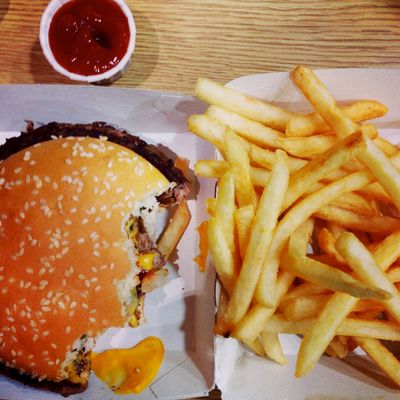
No sense is an island. As you go about your day, all five of them — smell, touch, sight, hearing, taste — are working in strange and surprising ways to shape your experiences. In some people, for example, touching certain textures can be enough to provoke strong emotions. Strong emotions can influence the smell of a crowded room. Smell, in turn, is one trick your brain uses to remember strangers. And when it comes to food, all hands are on deck — taste may take center stage, but flavor is also about odor and texture, color, even ambient noise.
Which is why, to make healthy food more appetizing, researchers are looking beyond taste. As Smithsonian recently reported, scientists at the American Chemical Society annual meeting have hit on one way to fool people into enjoying foods they otherwise might not: using added smells to make healthy food seem saltier, more sugary, or generally more like the bad-for-you-stuff that tastes so good.
The project, led by Thierry Thomas-Danguin, a researcher at the French National Institute for Agricultural Research’s Center for Taste and Feeding Behavior, centered around a device with a name that would make a cartoon mad-scientist proud: the Gas Chromatograph-Olfactometry Associated Taste.
To develop the machine, Thomas-Danguin had volunteers smell real fruit juice aromas through an olfactoscan device, which uses a tube to deliver a steady stream of smell to the user. Then, one by one, he added the isolated molecules to find out which ones would change people’s perceived sweetness of the juice. When participants ranked their perception of sweetness on a scale of one to ten, researchers found that some molecules caused them to perceive the juice as far sweeter than it really was, compared with samples featuring no added aroma.
This most recent study builds on previous work by Thomas-Danguin and colleagues, including research in which they added ham aroma to flan and found that it made the salty-sweet dessert taste saltier to people. Changes to the aroma alone caused some tasters to declare that a flan made with 40 percent less salt tasted the same as a regular version.
These added smells, Thomas-Danguin told Smithsonian, can serve as a substitute for flavor enhancers added to the dish itself: “If the consumers find these products not tasty enough, they will add table salt, sugar or butter, and consequently the target is fully missed,” he said. “I am convinced that through these strategies we can help people … learn to like these reduced levels.” Down the road, Smithsonian noted, he and his team hope that food manufacturers can use their research to jazz up their healthier offerings without sacrificing taste. In the meantime, scientists may have just discovered an actual use for the bacon candle.

